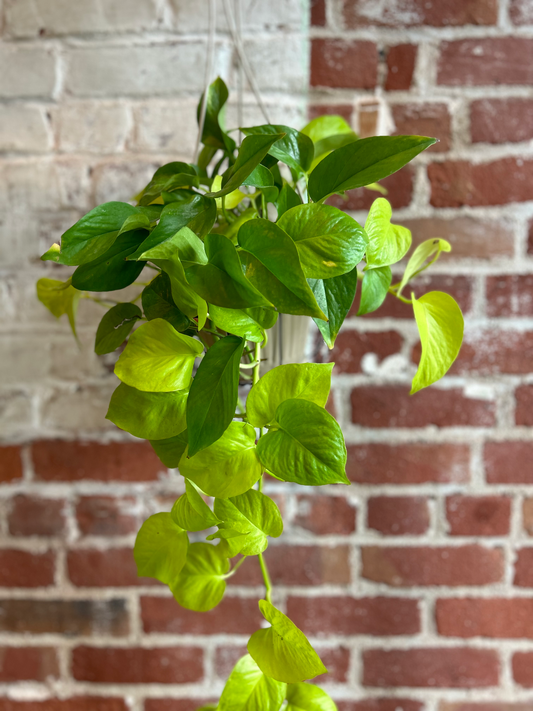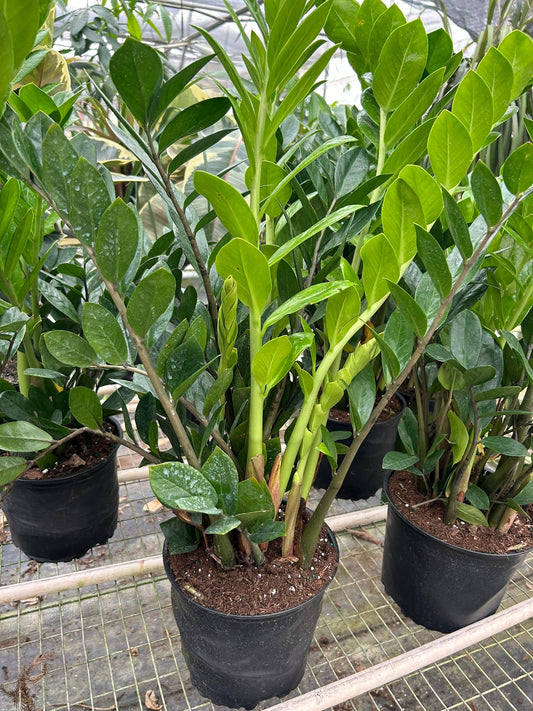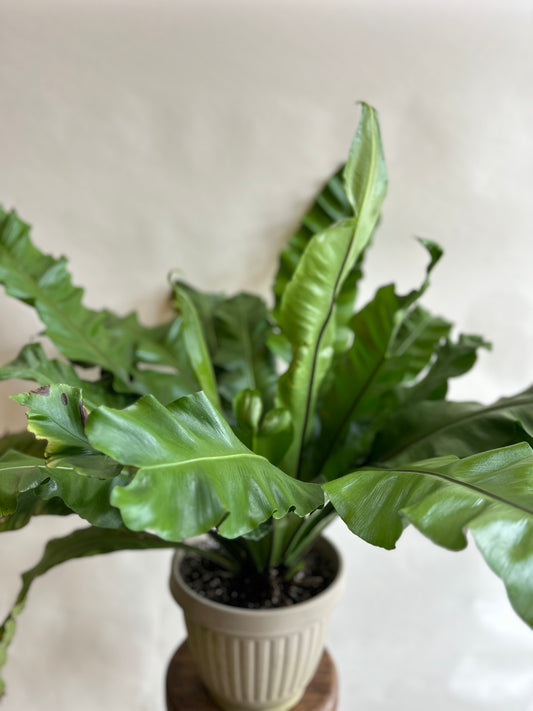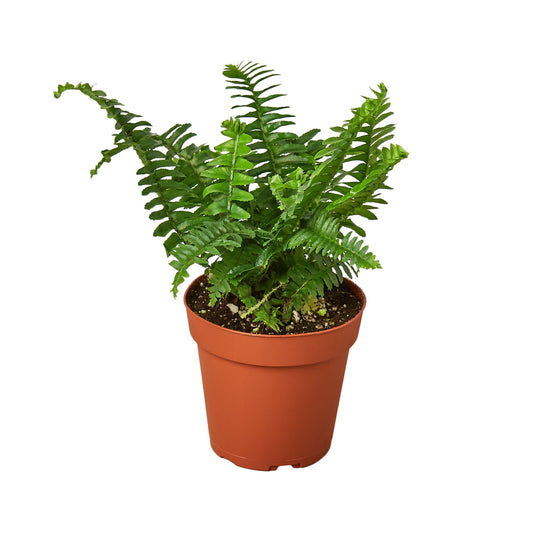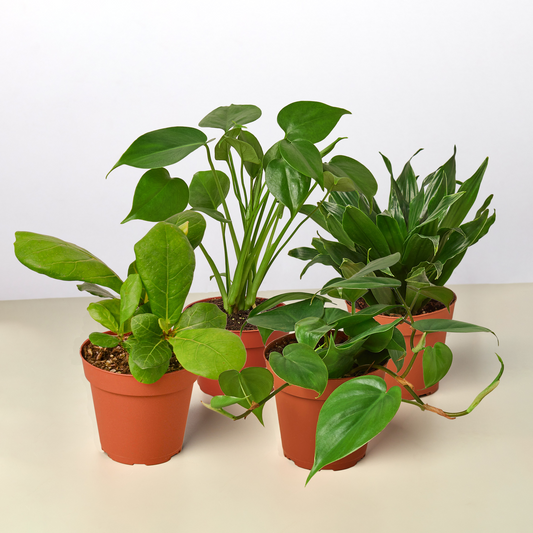How to Grow and Care for Philodendron Erubescens
Cafe Planta Team
Philodendron Erubescens, known for its stunning red-tinged leaves, is a favorite among plant lovers. With a touch of the exotic and a splash of color, this plant adds an undeniable charm to any space. Whether you're a seasoned plant parent or just starting your green journey, this plant is a delightful addition to your collection.
In this guide, we'll explore how to grow and care for Philodendron Erubescens. From selecting the right pot and soil to tackling common pests, we'll cover everything you need to know. Plus, we'll offer tips on incorporating this beauty into your home's interior design. So, let's roll up our sleeves and get started on making your Philodendron thrive!
Choosing the Right Spot for Your Philodendron
When it comes to finding the perfect spot for your Philodendron Erubescens, lighting is key. This plant thrives in bright, indirect light, so think about placing it near a window where it can receive plenty of natural light without being scorched by direct sunlight. If the leaves start to lose their vibrant red hue or become leggy, it might be a sign that your plant needs more light. On the other hand, if you notice brown spots or crispy edges, it could be getting too much sun.
If you're limited on natural light, don't fret! Philodendrons are quite adaptable and can tolerate lower light levels, although their growth might slow down a bit. You could also supplement with a grow light to keep them happy during darker months. Just remember, balance is everything—too much of a good thing can be harmful!
Humidity is another factor to consider. Philodendron Erubescens appreciates a humid environment, similar to its native tropical habitat. If your home tends to be on the dry side, especially during winter, consider using a humidifier or placing your plant on a pebble tray with water to boost humidity levels. Your plant will thank you with lush, healthy leaves.
Picking the Perfect Pot and Soil
Choosing the right pot and soil is crucial for the health of your Philodendron Erubescens. Let's start with the pot. Ensure it has adequate drainage holes to prevent water from pooling at the bottom, which can lead to root rot—a common enemy of houseplants. A pot that's too large can hold excess moisture, so opt for one that's just slightly bigger than the root ball to encourage healthy growth.
Now, onto the soil. Philodendrons prefer a well-draining potting mix to keep their roots from sitting in water. A mix of peat moss, perlite, and orchid bark works wonders, providing both aeration and moisture retention. You can buy pre-mixed aroid soil from garden centers or make your own blend. Just avoid heavy soils that compact easily, as they can suffocate the roots.
When it's time to repot, usually every couple of years or when you notice roots poking out of the drainage holes, choose a pot that's one size larger. Gently remove the plant, shake off excess soil, and trim any dead or damaged roots before placing it in its new home. Add fresh soil around the root ball and water thoroughly to help settle the plant in its new digs.
Watering Your Philodendron Erubescens
Watering can be a bit of a balancing act with Philodendron Erubescens. These plants like their soil to dry out slightly between waterings, so it's important not to overdo it. To test the moisture level, stick your finger about an inch into the soil. If it feels dry at that depth, it's time to water.
When watering, aim for a thorough soak until water drains from the bottom of the pot. This ensures that all the roots receive moisture. Avoid leaving your plant sitting in water, though, as this can lead to root rot. If you're ever unsure, it's typically safer to err on the side of underwatering rather than overwatering.
Your watering schedule might change with the seasons. In the growing months of spring and summer, your Philodendron will likely need more frequent watering, while in the cooler months of fall and winter, you can ease up a bit as the plant's growth slows down.
Feeding Your Plant for Optimal Growth
Fertilizing your Philodendron Erubescens can give it the extra boost it needs to thrive. During the growing season, from spring through early fall, feed your plant every 4-6 weeks with a balanced, water-soluble fertilizer. This will provide the essential nutrients needed for healthy growth and vibrant foliage.
It's important not to over-fertilize, as this can cause a buildup of salts in the soil, which may harm the roots. Always follow the instructions on your fertilizer package, and consider using a diluted solution to prevent any potential damage.
During the winter months, your plant's growth will slow down, so you can ease off the feeding. Just like us, Philodendrons appreciate a bit of a break during the cooler months. Keep an eye on your plant, and if you notice any yellowing leaves, it might be a sign of nutrient deficiency, indicating that it's time for a light feeding even in the off-season.
Pruning and Propagation
Pruning your Philodendron Erubescens isn't just about keeping it looking neat—it's also an opportunity to encourage bushier growth and remove any damaged or unhealthy leaves. Use clean, sharp scissors or pruning shears to snip off any yellowing, browning, or leggy stems. This allows the plant to focus its energy on healthy growth.
Want to share the love and propagate your Philodendron? It's easier than you might think! These plants are quite forgiving and root readily in water or soil. Here's a simple step-by-step guide to get you started:
- Choose a healthy stem: Look for a stem with at least two leaves and a node—the small bump where leaves emerge.
- Make the cut: Use a clean, sharp blade to cut just below the node.
- Rooting in water: Place the cutting in a jar of water, ensuring the node is submerged. Change the water weekly and wait for roots to develop, which usually takes a few weeks.
- Rooting in soil: Place the cutting in a pot with fresh, well-draining soil. Water lightly and keep the soil moist but not soggy until roots establish.
Once your cutting has developed a healthy root system, you can pot it up in its own container and watch it flourish into a new plant.
Dealing with Pests and Problems
Even the most careful plant parents can find themselves dealing with pests. For Philodendron Erubescens, the most common culprits are spider mites, mealybugs, and aphids. Luckily, these pests are usually more of an annoyance than a serious threat, and with a bit of vigilance, you can keep your plant pest-free.
If you notice any tiny invaders, start by isolating the affected plant to prevent the pests from spreading. A gentle shower can often dislodge many pests, so give your plant a good rinse in the sink or shower. For more persistent problems, you might need to use insecticidal soap or neem oil. Always follow the product instructions, and test on a small part of the plant first to ensure it doesn't cause damage.
Besides pests, watch out for signs of trouble like yellowing leaves, which can indicate overwatering, or brown, crispy edges, which might signal underwatering or too much direct sunlight. Address these issues promptly, adjusting your care routine as needed to keep your plant healthy and happy.
Incorporating Philodendron Erubescens in Interior Design
Philodendron Erubescens doesn't just bring a touch of nature indoors—it can also be a stunning part of your home's design. Its vibrant leaves and striking color make it an excellent accent piece, capable of adding life and texture to any room.
Consider placing your plant in a decorative pot that complements your decor. Whether you prefer modern, rustic, or boho styles, there's a pot out there that will make your Philodendron shine. You can also use plant stands to elevate your plant, creating a layered effect with other houseplants.
Philodendrons are versatile and can fit into various spaces, from the living room to the bathroom. Try placing them near a window or on a shelf where their trailing vines can cascade down for a dramatic effect. Pair them with other plants with different textures and colors for an eye-catching display that brings the outdoors in.
Regular Maintenance and Long-term Care
Like any relationship, the one with your Philodendron Erubescens requires regular attention and care. Beyond the basics of watering and fertilizing, keep an eye on your plant's overall health. Dust can accumulate on leaves, so wipe them down regularly with a damp cloth to keep them clean and allow for optimal photosynthesis.
Repot your plant every couple of years or when it outgrows its current pot. This is also a great time to refresh the soil and check the root health. If your plant seems a bit droopy or lackluster, it might benefit from a little TLC in the form of a gentle pruning or even a new potting mix.
Lastly, remember that plants, like people, can be affected by their environment. Keep an eye on any changes in your home's temperature or humidity, especially during seasonal shifts, and adjust your care routine accordingly. With consistent care, your Philodendron Erubescens can be a long-lasting companion that brings joy and beauty to your home.
Final Thoughts
Philodendron Erubescens is a wonderful addition to any home, offering beauty and a touch of tropical flair. With the right care, from watering to pest management, your plant will thrive and bring a bit of the wild indoors.
At Cafe Planta, we're passionate about helping you create a thriving plant collection. Whether you're looking for new plant additions or care tips, we're here to help. Feel free to email us or reach out on Instagram with any questions. Let's grow together!


